Blog
Spring In Texas Begins The Quest For Bluebonnets!
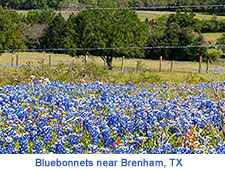 As any Texan native knows, spring means loading everyone into the family car for the annual pilgrimage to view the beautiful, blue fields of our beloved bluebonnets - the state flower of Texas. These iconic flowers have been the subject of family photos for generations. What Texas family does not have pictures of the kids sitting in the midst of the blue and white blossoms with the occasional Indian paintbrush or primrose in the mix? Texas is defined by many images: longhorn cattle, weathered fences, or oil being pumped out from a desolate prairie but the sight of the bluebonnet pulls all those images together and focuses them in an outline map of Texas!
As any Texan native knows, spring means loading everyone into the family car for the annual pilgrimage to view the beautiful, blue fields of our beloved bluebonnets - the state flower of Texas. These iconic flowers have been the subject of family photos for generations. What Texas family does not have pictures of the kids sitting in the midst of the blue and white blossoms with the occasional Indian paintbrush or primrose in the mix? Texas is defined by many images: longhorn cattle, weathered fences, or oil being pumped out from a desolate prairie but the sight of the bluebonnet pulls all those images together and focuses them in an outline map of Texas!
The quest for bluebonnets involves location and timing. With the erratic Texas weather, the plants may burst forth with color anywhere from mid-March to early April. If there has been a dry winter, the flowers may be smaller and a little sparse but their beauty is still visible to the Texas eye. Knowing where to find the largest fields requires some research and years of 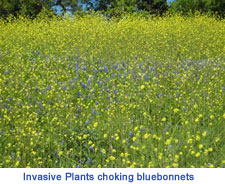 experience as a bluebonnet observer. I remember three generations of my family taking a Sunday drive from Houston to Brenham to view the endless fields of wildflowers surrounded by barbed wire fences with cedar posts. The shoulder of the road was packed with parked cars while the occupants strolled along the highway, looking for just the "right spot" for the family photo. Throughout the years, the larger fields of flowers have been plowed under as more land is used for grazing cattle or growing crops. Invasive plants like the taller Bastard Cabbage with its long tap root are taking their toll on the smaller bluebonnets by robbing the soil of necessary nutrients and resources. Property owners are now being encouraged to mow the fields to prevent the flowering and seeding of the unwanted plant and to hand pull the invaders out of the ground when possible to give the struggling bluebonnets the help they deserve.
experience as a bluebonnet observer. I remember three generations of my family taking a Sunday drive from Houston to Brenham to view the endless fields of wildflowers surrounded by barbed wire fences with cedar posts. The shoulder of the road was packed with parked cars while the occupants strolled along the highway, looking for just the "right spot" for the family photo. Throughout the years, the larger fields of flowers have been plowed under as more land is used for grazing cattle or growing crops. Invasive plants like the taller Bastard Cabbage with its long tap root are taking their toll on the smaller bluebonnets by robbing the soil of necessary nutrients and resources. Property owners are now being encouraged to mow the fields to prevent the flowering and seeding of the unwanted plant and to hand pull the invaders out of the ground when possible to give the struggling bluebonnets the help they deserve.
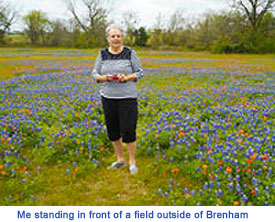 The area around Brenham has changed yet it is still known for its stunning displays of bluebonnets blanketing the rolling fields of the rural environs outside of the city. Narrow, winding roads traverse through the many ranches and each mile traveled brings the hope of discovering a surprising display of a mixture of wildflowers just beyond the next curve. Fields of bluebonnets, Indian paintbrushes, red and yellow poppies all mixed with the pink primroses and yellow daisies turn the countryside into a view of a brightly colored painting by Manet or Matisse. The narrow roads offer few places to pull over and take pictures, so the passenger in the front seat must be adroit at fast photography. Occasionally, there will be a driveway or a widening of the road that will allow for a brief photo opportunity, however, before grabbing the children and plopping them down in the middle of a wildflower field for that perfect picture, remember that Texas does have snakes, spiders, and other creepy, crawly things that might not appreciate having a child lowered on top of them.
The area around Brenham has changed yet it is still known for its stunning displays of bluebonnets blanketing the rolling fields of the rural environs outside of the city. Narrow, winding roads traverse through the many ranches and each mile traveled brings the hope of discovering a surprising display of a mixture of wildflowers just beyond the next curve. Fields of bluebonnets, Indian paintbrushes, red and yellow poppies all mixed with the pink primroses and yellow daisies turn the countryside into a view of a brightly colored painting by Manet or Matisse. The narrow roads offer few places to pull over and take pictures, so the passenger in the front seat must be adroit at fast photography. Occasionally, there will be a driveway or a widening of the road that will allow for a brief photo opportunity, however, before grabbing the children and plopping them down in the middle of a wildflower field for that perfect picture, remember that Texas does have snakes, spiders, and other creepy, crawly things that might not appreciate having a child lowered on top of them.
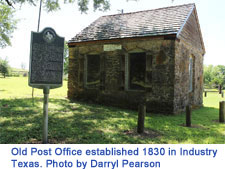 Bluebonnet viewing also offers the opportunity to learn a little more about the rich history of this part of the state. Taking a meandering tour through the area west of Houston, gives the chance to not only view the flowers of spring but to also see the many, interesting small towns in that area. Industry, Texas was the first permanent German settlement in Texas. Friedrich Ernst settled in that area in 1831 and Industry became known as the "Cradle of German Settlement in Texas." Round Top was a part of the original Stephen F. Austin colony and was originally known as Townsend. The town was renamed Round Top since the postmaster lived in a house with a round tower. The town is the smallest incorporated town in Texas and has many points of interest as well as the annual Round Top Antiques Fair. Burton was established in 1862 and was helped by the arrival of the railroad after the Civil War. The town was known for ginning cotton and still
Bluebonnet viewing also offers the opportunity to learn a little more about the rich history of this part of the state. Taking a meandering tour through the area west of Houston, gives the chance to not only view the flowers of spring but to also see the many, interesting small towns in that area. Industry, Texas was the first permanent German settlement in Texas. Friedrich Ernst settled in that area in 1831 and Industry became known as the "Cradle of German Settlement in Texas." Round Top was a part of the original Stephen F. Austin colony and was originally known as Townsend. The town was renamed Round Top since the postmaster lived in a house with a round tower. The town is the smallest incorporated town in Texas and has many points of interest as well as the annual Round Top Antiques Fair. Burton was established in 1862 and was helped by the arrival of the railroad after the Civil War. The town was known for ginning cotton and still 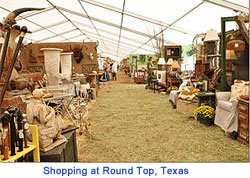 has the Texas Cotton Gin Museum. All states have fascinating histories and Texas is no exclusion. Viewing our state's magnificent spring flower display is worth seeing and learning about new areas and historical locations are an added attraction.
has the Texas Cotton Gin Museum. All states have fascinating histories and Texas is no exclusion. Viewing our state's magnificent spring flower display is worth seeing and learning about new areas and historical locations are an added attraction.
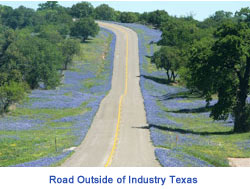 So head out on a beautiful spring day and spend a little family time following the trail of many generations before you on the way to finding the flower that gives Texas the beauty it deserves. Even if you aren't a native Texan, you can't help but feel the pride of the state that celebrates its uniqueness with the beauty of the magnificent Texas bluebonnet and if you are lucky, you might just catch sight of a Texas longhorn steer standing in the middle of a field of wildflowers for that picture perfect moment.
So head out on a beautiful spring day and spend a little family time following the trail of many generations before you on the way to finding the flower that gives Texas the beauty it deserves. Even if you aren't a native Texan, you can't help but feel the pride of the state that celebrates its uniqueness with the beauty of the magnificent Texas bluebonnet and if you are lucky, you might just catch sight of a Texas longhorn steer standing in the middle of a field of wildflowers for that picture perfect moment.
Blogger's note: When viewing our Texas bluebonnets, we must remember to say "thank you" to Lady Bird Johnson, wife of Lyndon B. Johnson. She was dedicated to protecting our native Texas plants and many of the bluebonnets we enjoy today were planted due to her encouragement. The Lady Bird Johnson Wildflower Center at the University of Texas at Austin is the state botanical garden and arboretum of Texas and is open to visitors. Visit their website for more information https://www.wildflower.org/
One thing to remember is that most of this route involves driving on narrow two lane country roads so be on the look-out for deer and the occasional farmer driving a tractor with a load of hay to take to the fields.
This suggested route for bluebonnet viewing is one that I have taken many, many times in the past. For this current wildflower season, my sister-in-law and I are heading out to the hill country around Fredericksburg to view the spring flowers in that part of the state. I will post information about what we find in a later blog. Hope you get some great photos! If you would like to comment or send me some of your pictures, go to the CONTACT US page and email the information. We always want to hear from our friends and neighbors!